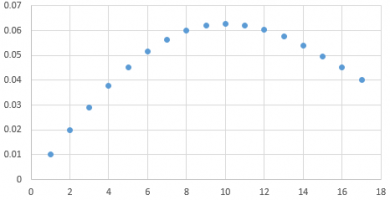Hello,
I need to find the maximum of a function kn=(100−n)!⋅100n+1100!nBy quick empirical test I found out that it is increasing for few first n. So my first intuition was "what is the last increasing n" which I wrote as an inequality kn>kn+1but unfortunately I was unable to solve it -> I got to the point −100n2+9999n+99>0 which just doesn't give sane solution. However if I turn my inequality to kn+1>kn I get correct solution which is 9. So why does the first inequality fail to deliver the solution and what other methods could I use?
I need to find the maximum of a function kn=(100−n)!⋅100n+1100!nBy quick empirical test I found out that it is increasing for few first n. So my first intuition was "what is the last increasing n" which I wrote as an inequality kn>kn+1but unfortunately I was unable to solve it -> I got to the point −100n2+9999n+99>0 which just doesn't give sane solution. However if I turn my inequality to kn+1>kn I get correct solution which is 9. So why does the first inequality fail to deliver the solution and what other methods could I use?

